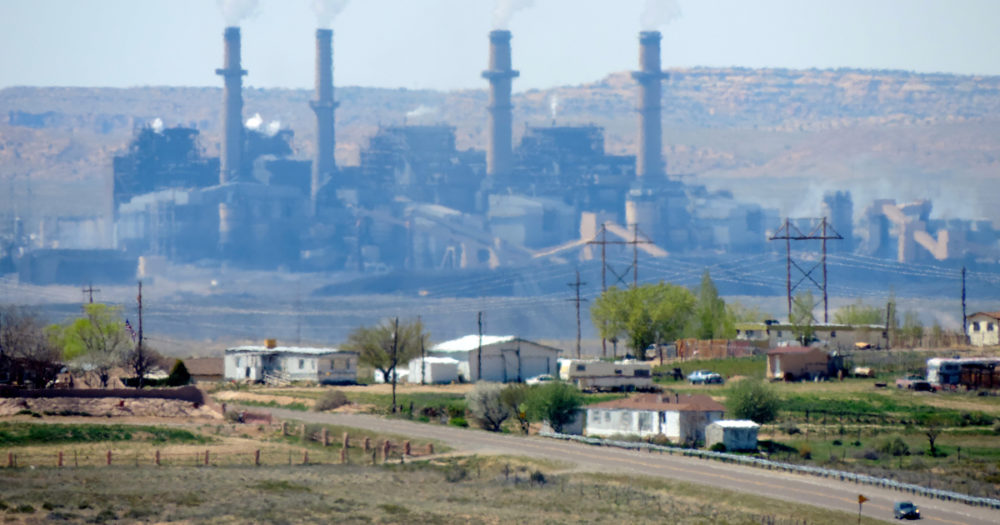Over the years, I’ve written and spoken extensively about the urgency of providing a fair and equitable transition for coal-impacted communities as we collectively move towards a clean energy economy. This includes not just the workers at the coal-fired power plants, but also the mine workers that feed those plants, as well as the communities surrounding those plants and mines that depend on the coal industry for their economic livelihoods. Given the scale of the climate crisis, it is imperative to drive down greenhouse gas emissions and transition to clean energy as quickly as possible. But the cost of this transition should not be borne solely by coal communities and workers, not does it have to be. By coupling clean energy commitments with the careful and targeted use of a powerful and somewhat lesser known financial tool called securitization, states can do both: accelerate the transition to clean energy and ensure that impacted coal workers and coal communities don’t get left behind.
The problem is multi-faceted and complex
For generating electricity, coal-fired power is becoming ever more uneconomic. If you’ve been following the transition to a clean energy economy, that’s not news—we wrote a report on that back in 2017 (and also in 2012 and 2013), and the economics have only gotten worse. A new report found that wind and solar could replace about 74 percent of coal plants with immediate savings to consumers.
But have you ever wondered what actually happens when a coal plant shuts down before the end of its “useful” life? It involves a lot of different stakeholders—utility owners and their investors, ratepayers, environmental advocates, surrounding communities, and plant workers, to name a few. And they often have different opinions about what should be done, to say the least. Another complication is whether the plant is in a rate-regulated or deregulated market. (For the purposes of this discussion, we’ll focus on the rate-regulated power plants—meaning that the electricity prices passed along to consumers are subject to oversight by the state public service commission.)
The Utility Owner: Even though the coal plant may be losing money compared to cheaper—and cleaner—alternatives in the market, the utility may not be financially motivated to close the plant early, because it still must pay off its debt on the investments it made, plus it continues to earn a return on those investments. This roadblock remains even if the utility is otherwise willing and eager to transition to clean energy.
The Ratepayer: By paying for electricity, customers pay back the debt on the utility’s investments, while guaranteeing that the utility can turn a profit (at a level approved by regulators). But the thing is, even if the plant closes early, the remaining debt must still be repaid. How the regulators respond to the utility’s request to close the plant has huge implications for consumers’ bills. (Case in point: after spending $425 million investing in Plant Gorgas since 2010, Alabama Power is now closing the plant, proposing to leave ratepayers in the state on the hook for about $60 million a year for the next 15-20 years.
The Regulators: The regulators must balance the needs of ratepayers with those of the utility. For example, regulators could disallow charges for a plant that is retired and no longer benefitting ratepayers, but this would leave the utility on the hook for the debt—with fewer resources to repay it, which could in turn affect the utility’s credit rating and make future projects more expensive. On the other hand, why should ratepayers face higher bills to pay for utility profits on uneconomic and no-longer-operating power plants?
Workers and Local Officials: Especially in rural communities, the coal plant may be the only major employer and account for a huge portion of the community’s or the county’s economic activity and tax base. What jobs will be available to workers after the plant’s closure? What resources will be available for retraining? How will the community make up for lost tax revenues that pay for schools, police, and social services? Local officials must grapple with real-world, almost existential questions like these in already-stretched-thin local budgets.
Community Environmental Advocates: Fenceline communities support the plant’s closure to reduce air pollution that harms public health. They also want to ensure cleanup of the mess left behind in the aftermath of the plant’s closure—including in the form of toxic coal ash ponds that have caused widespread contamination of nearby groundwater. And with foresight, plant workers facing an uncertain future can get to work on remediation of the site.
And then there’s the question of how to ensure that the plant is replaced by clean energy to reduce heat-trapping emissions that cause climate change, and to avoid a whole new round of stranded assets further down the line in the form of natural gas infrastructure. So, how to balance all these competing interests?
Multiple wins—if done right
What if there were a way to align these different perspectives and come up with a solution that works for most, if not all, stakeholders? In certain situations, a financial instrument called securitization can do just that. Securitization is akin to refinancing the mortgage on your home to a lower interest rate—which lowers your payments on the loan. To enable regulators to use securitization, authorizing legislation must be passed by the state.
So how does it work?
Securitization allows the utility, with proper oversight by the regulators, to refinance the remaining debt on the coal plant, and achieve a lower interest rate. The debt is repaid through ratepayer-backed bonds. The utility finances the bonds—which are used to repay the remaining debt—through irrevocable charges to ratepayers. Because this is considered a very safe investment, the interest rate on this type of bond is typically 3-4 percent (compared to 7-8 percent or higher for interest rate on the original debt).
This means that ratepayers save money—not just through the lower interest rate but also because customers are no longer paying for the utility to earn a profit on those (bad) investments.
And the beauty of this solution is that some of the savings can be shared with the workers and communities who will suffer the loss of jobs and tax base from the closure of the plant. This money can be used for worker retraining and community economic development, for example.
Sound too good to be true? It’s not an accounting gimmick—implemented with proper oversight and forethought, securitization can work to the advantage of all stakeholders. Want to read more details? Check out this series of reports on the subject.
Risks and best practices
Admittedly, it’s not as simple as I’ve made it sound (and it took me a lot of words to describe the “simple” explanation).
The main thing to keep in mind is that ratepayers are on the hook for the bill. So, implementing securitization requires thoughtful legislation and strong regulatory oversight. It is essential that an independent advisor is empowered to represent ratepayers in the case to ensure that they’re getting a good deal. The details of how the finances pencil out are critical to striking the right balance between the interests of shareholders, ratepayers, and the impacted workers and communities.
Securitization also can’t solve all problems brought by the transition away from coal. For example, there are limits to the amount of funds available, and challenges remain for mining communities when plants and mines are not directly linked.
And all of this is a cautionary tale, warning us collectively of the dangers of stranded assets—and to avoid the same mistake with natural gas in the future.
New Mexico emerges as clean energy leader
New Mexico just became the fourth jurisdiction in the United States, following California, Hawaii, and the District of Columbia, to commit to 100 percent clean energy.
But state leaders did more than that—they just demonstrated how to use securitization as way to break the logjam—proactively working to ensure that closure of the coal-fired San Juan Generating Station does not leave coal workers and coal communities behind, while at the same time setting clean energy targets as strong any other state. As part of the bill that the governor signed just last week, New Mexico jumps from 20 percent renewable electricity in 2020 to 50 percent renewables by 2030 and 80 percent renewables by 2040—with a commitment to achieve 100 percent carbon-free electricity by 2045.
These strong clean energy commitments have been coupled with securitization to facilitate the fair and cost-effective closure of the coal-fired San Juan Generating Station (SJGS) in 2022. New Mexico’s law provides on the order of $40 million in transition assistance to workers and communities in the affected region. It will ensure that some of the replacement power will be built in the area to lessen the loss in taxes from the closure of the coal plant—critical to local institutions like the school district.
Other states including Colorado, Utah, Minnesota, and Montana are considering similar legislation. When the right confluence of factors comes together, and when policy makers are clear headed about balancing different and often competing priorities, smart policy can be developed.

